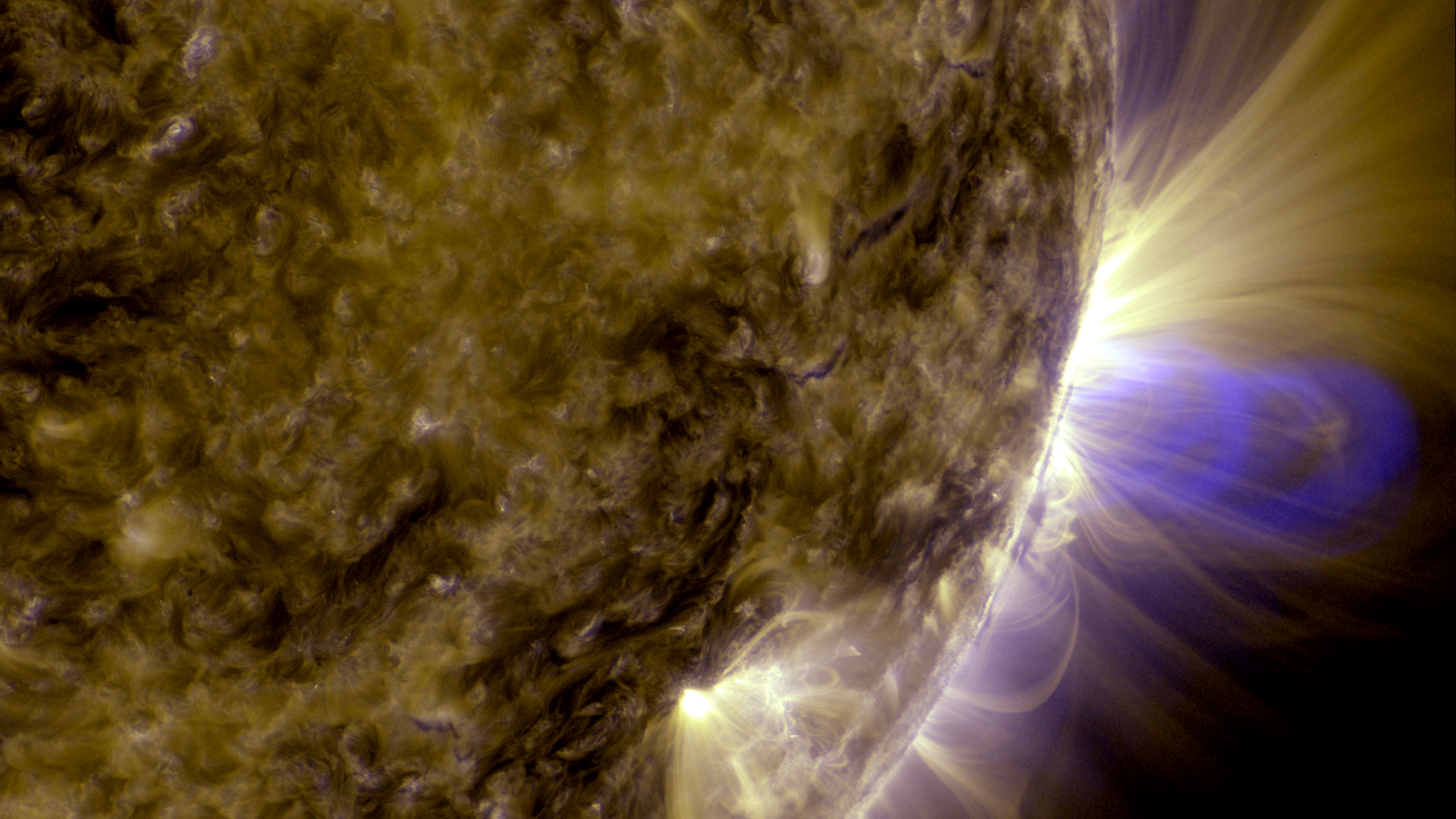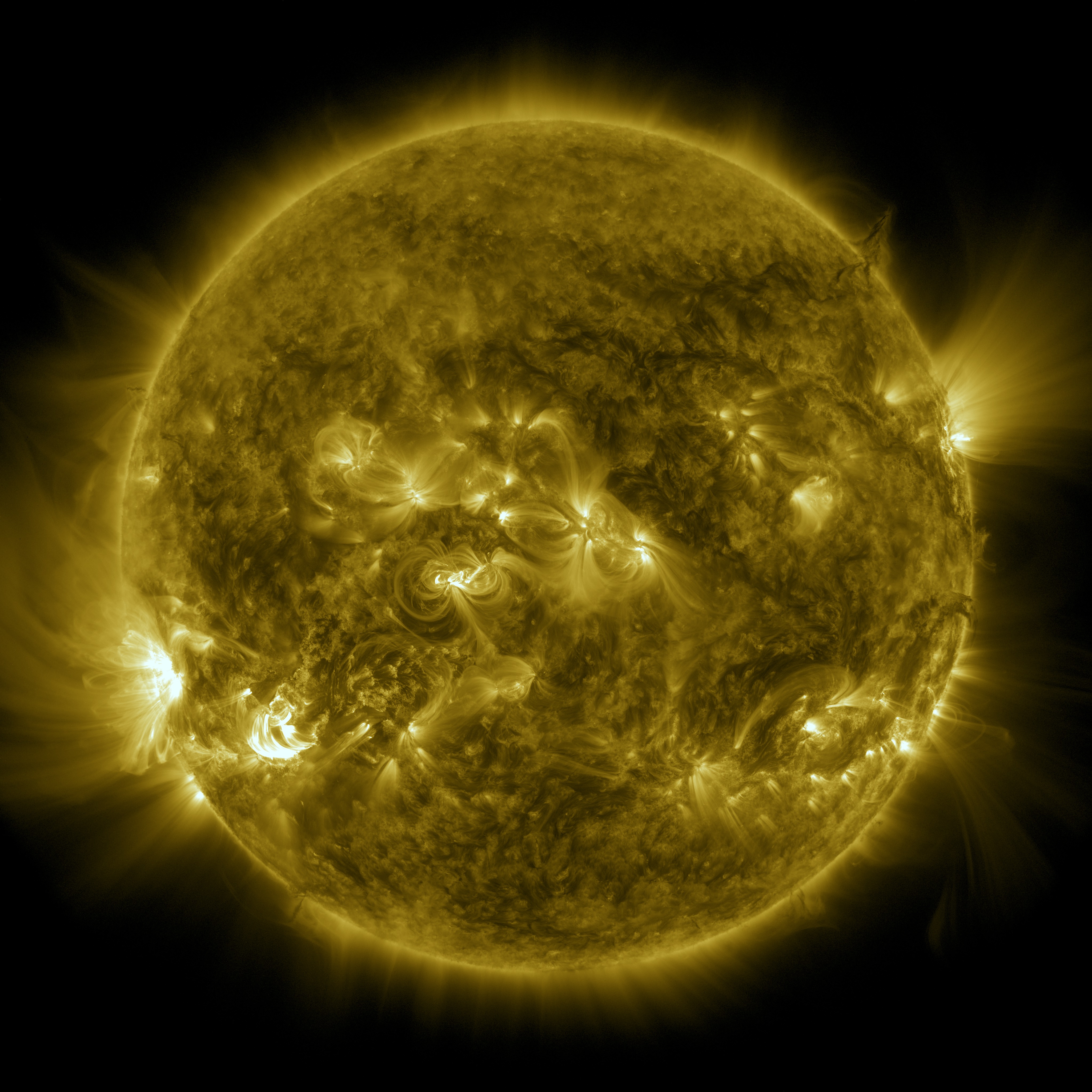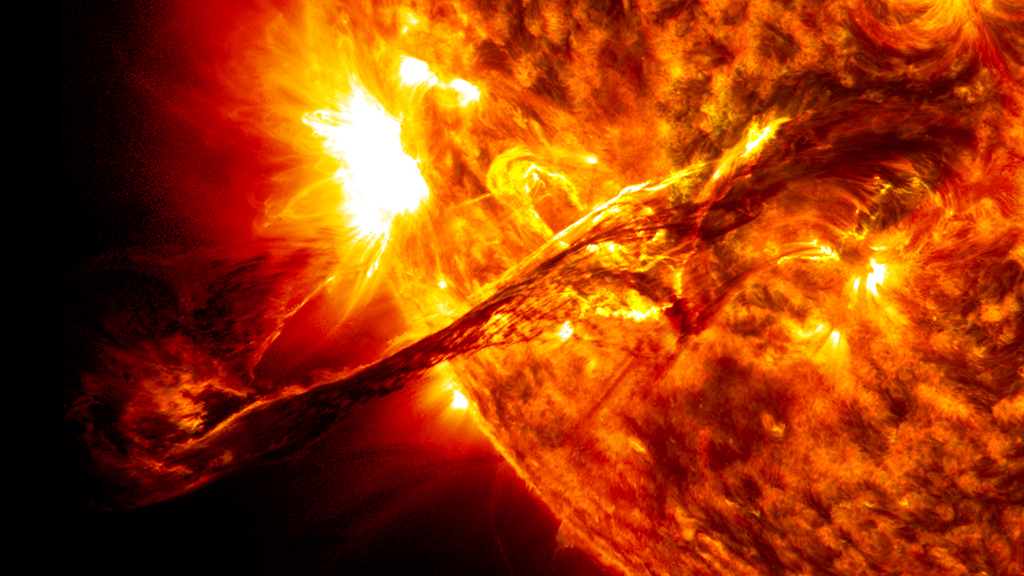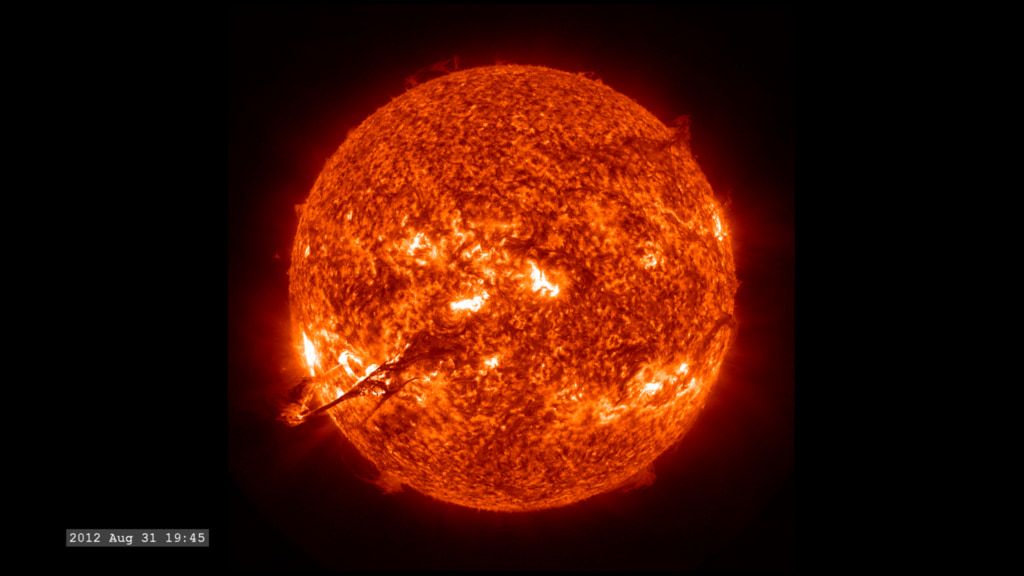A newer version of this visualization is available.
August 31, 2012 Magnificent CME
On August 31, 2012 a long filament of solar material that had been hovering in the sun's atmosphere, the corona, erupted out into space at 4:36 p.m. EDT. The coronal mass ejection, or CME, traveled at over 900 miles per second. The CME did not travel directly toward Earth, but did connect with Earth's magnetic environment, or magnetosphere, with a glancing blow. causing aurora to appear on the night of Monday, September 3.
This movie shows the ejection from a variety of viewpoints as captured by NASA's Solar Dynamics Observatory (SDO), NASA's Solar Terrestrial Relations Observatory (STEREO), and the joint ESA/NASA Solar Heliospheric Observatory (SOHO).
For complete transcript, click here.

Image of the Earth to scale with the filament eruption. Note: the Earth is not this close to the sun, this image is for scale purposes only.

The August 31 2012 coronal mass ejection shown in four different extreme ultraviolet wavelengths at 19:49 UT. Clockwise from upper left, the wavelengths are: 335, 171, 131, 304 angstroms.
Short video of the CME in 304 and 171 and a cropped still of the CME in 304.

An overlay blended version of the 304 and 171 angstrom wavelengths.

An overlay blended version of the 304 and 171 angstrom wavelengths. Cropped.

A lighten blended version of the 304 and 171 angstrom wavelengths.

A lighten blended version of the 304 and 171 angstrom wavelengths. Cropped.
Long frame sequences and 4k ProRes video of the filament eruption and CME in 304. The frame rate is one frame every 36 seconds.
Long frame sequences and 4k ProRes video of the filament eruption and CME in 171. The frame rate is one frame every 36 seconds.
A short frame sequence and still of the main part of the filament eruption and CME in 131. The frame rate is one frame every 36 seconds.
A short frame sequence and still of the main part of the filament eruption and CME in 335. The frame rate is one frame every 36 seconds.
A short frame sequence and still of the main part of the filament eruption and CME in 193. The frame rate is one frame every 36 seconds.
For More Information
Credits
Please give credit for this item to:
NASA/Goddard Space Flight Center
-
Animator
- Tom Bridgman (Global Science and Technology, Inc.)
-
Producer
- Scott Wiessinger (USRA)
-
Writer
- Karen Fox (ADNET Systems, Inc.)
Release date
This page was originally published on Tuesday, September 4, 2012.
This page was last updated on Wednesday, May 3, 2023 at 1:52 PM EDT.
Missions
This visualization is related to the following missions:Series
This visualization can be found in the following series:Tapes
This visualization originally appeared on the following tapes:-
Heliophysics Breaking News 2012 collection
(ID: 2012048)
Thursday, November 1, 2012 at 4:00AM
Produced by - Robert Crippen (NASA)



